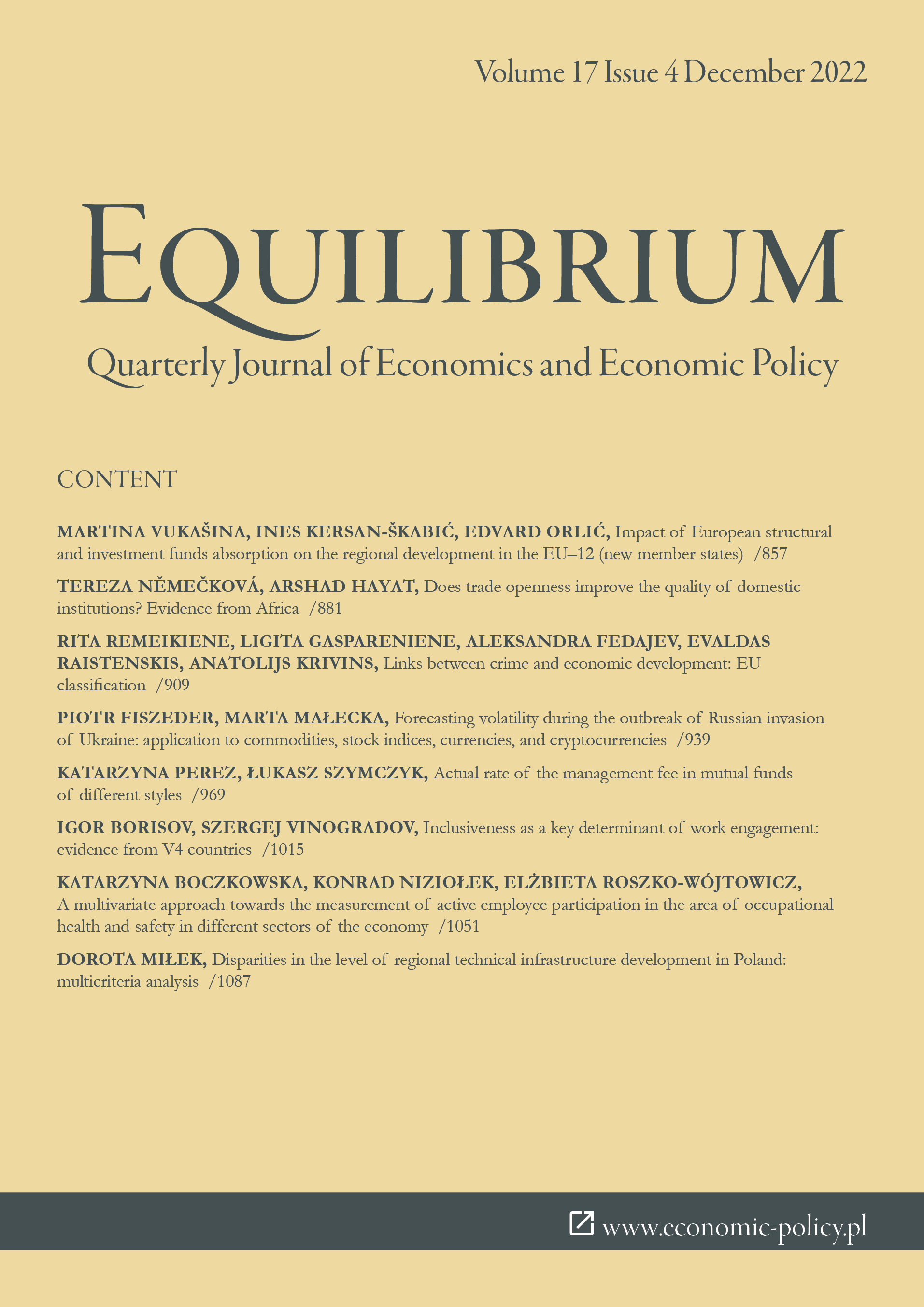Disparities in the level of regional technical infrastructure development in Poland: multicriteria analysis
Disparities in the level of regional technical infrastructure development in Poland: multicriteria analysis
Author(s): Dorota MiłekSubject(s): EU-Accession / EU-DEvelopment
Published by: Instytut Badań Gospodarczych
Keywords: regional infrastructure; regional disparities; Poland’s voivodeships; taxonomic analysis; multicriteria analysis; Hellwig development pattern method;
Summary/Abstract: Research background: The development policy currently promoted by the European Union is focused on the use of the territory?s internal resources. Among the factors affecting regional development, by building its potential, infrastructure, being a basic necessity for developing activity in a given area, is of significant importance. Hence, investment in infrastructure is critical to stimulating economic dynamism, as it is the basis for supporting a variety of measures aimed at economic growth.Purpose of the article: This paper aims to evaluate the level of development of technical infrastructure and changes taking place in this field in Polish voivodeships in 2008 and 2020.Methods: The study was carried out using the Hellwig development pattern method and a comparative analysis of the technical infrastructure of Polish regions. The above approach makes it possible to measure the diversity of the state and availability of infrastructure for the communities of the regions.Findings & value added: While implementing the study aim, particular attention was paid to the spatial differences in the level of development of the technical infrastructure of Polish voivodeships. The analysis enabled to distinguish groups of voivodeships with the highest, high, low, and very low level of technical infrastructure development. From a long-term perspective, the conducted research can be seen as a contribution to existing research and serve to further compare the impact of technical infrastructure on the economic development of countries. The strength of the study is the adequately long time span of the analysis (2008 ? the period of the financial crisis and 2020 ? the COVID 2019 pandemic), which provides a basis for the formation of the infrastructure in question. The added value of the article is also a regional perspective on the level of development of technical infrastructure using multidimensional methods of statistical analysis. The results of the study can be used to make decisions at the national level regarding the retrofitting of infrastructure in regions with a low level of infrastructure development. For the European Union's decision-makers they can be a source of knowledge of where to direct EU funds the purpose of which is the infrastructural development of regions.
Journal: Equilibrium. Quarterly Journal of Economics and Economic Policy
- Issue Year: 17/2022
- Issue No: 4
- Page Range: 1087-1113
- Page Count: 27
- Language: English

